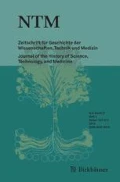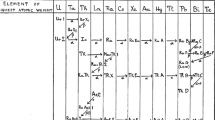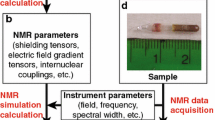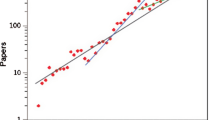The Formation of a Scientific-technological Community. NMR-Spectroscopy in the Federal Republic of Germany
After World War II, different kinds of physical instruments became the cores of communities whose members were specialised in the development of instrumental methods. Scientists, instrument builders, civil servants, and employees of private companies took over active parts in the formation of these communities. In his concept of Research Technology, the sociologist Terry Shinn identified a specific group between scientific research and technology of instrumentation, working on the invention of instruments and their transfer into different fields of application. Here, we focus on the final part of this process. Our case study is the implementation of Nuclear Magnetic Resonance (NMR) in the Federal Republic of Germany as a standard method for spectroscopical analysis in chemistry, and as a research field in its own right. In this setting, the adaptation and institutional stabilisation of NMR in chemistry cannot be reduced to the activities of the relatively narrow group of research technologists. We call the social network around NMR a scientific-technological community. Like research technologists, members of the scientific-technological community worked in the interstitial spaces between science, administration, and industry, but they comprised a much wider range of functions. As for results, we recognize the huge impact of governmental funding on the innovation of novel instrumentation, the importance of academic scientists as both referees and users, and the efforts to establish NMR as a truely interdisciplinary field and generic method. The case of NMR in the Federal Republic of Germany shows specific regional traits, but is part of a general movement in science emphasizing the development of instrumental methods.
Similar content being viewed by others
Author information
Authors and Affiliations
Corresponding author
Additional information
Die dem Artikel zugrunde liegende Forschung wurde durch die Deutsche Forschungsgemeinschaft im Rahmen der Forschergruppe 393 „Wechselwirkungen zwischen Naturwissenschaft und Technik: Formen der Wahrnehmung und Wirkung im 20. Jahrhundert“ unterstützt. Wir danken den Mitgliedern der Forschergruppe für professionelle und anregende Zusammenarbeit. Weiterhin danken wir den drei anonymen Gutachter/innen und der Redaktion von NTM für ihre kritischen Stellungnahmen sowie unseren Gesprächs- und Interviewpartnern, Walter Pietrusziak von der Gruppe Informationstechnik, Infrastruktur in der DFG-Geschäftsstelle in Bonn und den Mitarbeitern des Bundesarchivs in Koblenz für ihre Unterstützung.
Rights and permissions
About this article
Cite this article
Reinhardt, C., Steinhauser, T. Formierung einer wissenschaftlich-technischen Gemeinschaft. N.T.M. 16, 73–101 (2008). https://doi.org/10.1007/s00048-007-0280-z
Published:
Issue Date:
DOI: https://doi.org/10.1007/s00048-007-0280-z
Keywords:
- scientific-technological community
- research technology
- scientific instruments
- Nuclear Magnetic Resonance Spectroscopy (NMR)
- science policy
- scientific funding




